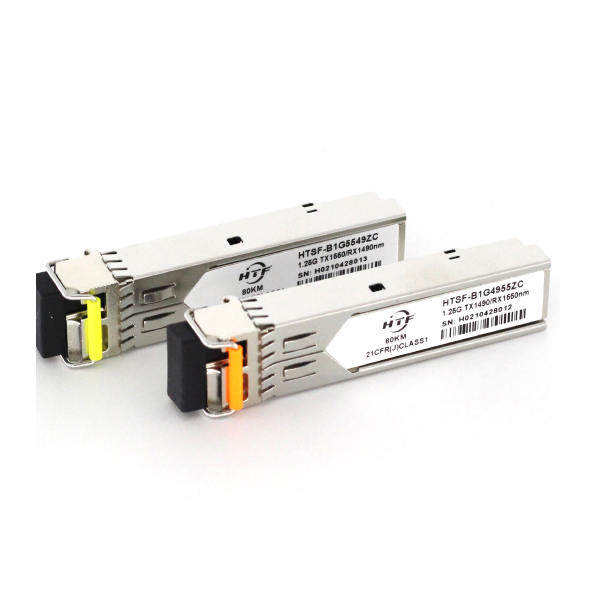What Does Single-Mode Fiber Mean?
Single-mode fiber is a common type of optical fiber that is used to transmit over longer distances. It is one of the two optical fiber types, the other being multi-mode fiber. A single-mode fiber is a single glass fiber strand used to transmit a single mode or ray of light.Single-mode fiber features only one transmission mode. Compared with multi-mode fiber, it can carry higher bandwidths; however, it needs to have a light source having a narrow spectral width.
The meaning of single fiber bidirectional optical module
BIDI optical module is an optical module that uses WDM (wavelength division multiplexing) bidirectional transmission technology, which realizes simultaneous bidirectional transmission in an optical channel on an optical fiber. Different from the conventional optical module (with two optical fiber jacks), the BIDI optical module has only one jack, which transmits and receives signals on an optical cable through an integrated two-way coupler.
Working principle of BIDI optical module
The main difference between the BIDI optical module and the traditional dual-fiber bidirectional optical module is that the BIDI optical module is equipped with a wavelength division multiplexing (WDM) coupler, that is, a duplexer. The data transmitted on a fiber is processed according to the different wavelengths. Convergence and separation. Because of this, BIDI optical modules are also considered WDM optical modules.
In order to be able to work efficiently, BIDI optical modules must be paired to use, by tuning the duplexer to match the desired wavelength of the transmitter and receiver, to achieve two-way data transmission.

To realize the simultaneous transmission of optical signals in both directions of receiving and sending, different optical wavelengths need to be used in the receiving and sending directions. Generally, an optical module has two ports, a transmitting port and a receiving port. The single-fiber bidirectional optical module has only one port, which is filtered by the filter in the optical module, and simultaneously completes the transmission of one wavelength optical signal and the reception of another wavelength optical signal, or vice versa. For example, the local end emits an optical signal of 1310 nm while receiving an optical signal of 1550 nm. The opposite end uses the opposite wavelength to that of the local end, that is, it emits 1550 nm optical signals and receives 1310 nm optical signals. Therefore, the module must be used in pairs at both ends of the link. Commonly used wavelengths for single-fiber bidirectional optical modules are 1310 nm/1490 nm and 1510 nm/1590 nm.
Both single-fiber two-way and single-fiber three-way are transmission technologies used in communications. At present, single-fiber two-way technology is relatively mature, and single-fiber three-way transmission technology is constantly improving and developing. Mastering the single-fiber two-way technology helps to understand the new single-fiber three-way technology.

